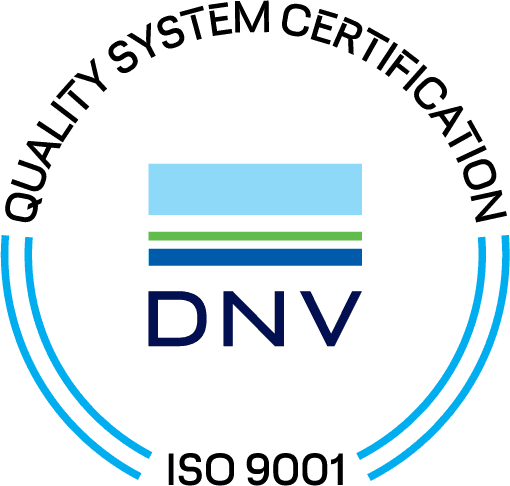ADC Energy Ltd (ADC) were awarded a contract by an Oil and Gas Operator to perform an inspection of a subsea BOP during an End of Well (EOW) maintenance period and witness the work and workscope carried out on the BOP and Well Control Equipment (WCE).
ADC was awarded a contract by an Oil and Gas Operator to perform an on-board inspection of a 5th Generation BOP and MUX Control System and to witness the ongoing End of Well maintenance work.
ADC mobilised a Subsea BOP Specialist to the rig to monitor and report to the client on the progress and workscope being undertaken by a drilling contractor during a planned EOW workscope.
This included visual inspection of the BOP and WCE witnessing and reporting on pre-deployment testing phase. Testing was carried out in accordance with the Well Operator (Duty Holder) procedures and API Standard 53 requirements.
As a critical element of both the Well Operators Procedures and API S53 the design, condition and functional operation of the BOP ROV Intervention System and 3rd Party ROV Pumping Skid equipment were inspected, function tested and their compatibility and suitability observed.
The BOP inspected was an NOV Shaffer NXT 18-3/4″, 15K stack with 2 annulars and six pipe rams.
The stack was equipped with multiple ROV intervention panels, an Acoustic Pod and an Emergency Hydraulic Backup System (EHBS).
Two ROV intervention panels were installed on the LMRP and twenty ROV intervention panels on the lower stack. The functions provided for were in excess of the minimum requirements of API S53
The BOP stack shall be equipped with ROV intervention equipment that at a minimum allows the operation of the critical functions (each shear ram, one pipe ram, ram locks, and unlatching of the LMRP connector).
API S53, section 7.3.20.1.1
In addition to the ROV stab receptacles three flying leads were equipped with stabs.
During a review of historic topside BOP ROV intervention tests, using an ROV test pump to simulate the actual pressure and flow which would be expected from an ROV intervention, the following function timings were noted:
| Function | Operation | Time (secs) |
| Blind Shear Rams | Close | 162 |
| Casing Shear Rams | Close | 153 |
| Upper Pipe Rams | Close | 228 |
| Riser Connector | Unlatch (Primary & Secondary) | 168 |
| Wellhead Connector | Unlatch (Primary & Secondary) | 146 |
All critical functions shall meet the closing time requirements in 7.4.6.5.4.
(a) close each ram BOP in 45 seconds or less; (c) unlatch the riser (LMRP) connector in 45 seconds or less’
API S53, Section 7.4.6.5.4
In order to improve these timings and to comply with API an uprated system for the ROV BOP intervention skid was supplied by a 3rd party. The upgrade was a High-Low Pump BOP intervention skid. The skid was a modification and was designed to be fastened below the ROV.
The intervention skid comprised 4 hydraulic reservoirs which had a total capacity of 130 gallons. The pump set was capable of pumping fluid in two phases:
65 GPM up to 1200 PSI. 20 GPM up to 5000 PSI.
The fluid was delivered via a flying lead and a stab.
On inspection it was found that all of the BOP ROV intervention panel receptacles and flying lead stabs were of the same design; dual-ported and all connected with 1/2” bore hose.

The flying lead stab and the receptacles were duel port design with only the pin end port connected. The receptacle port was 3/8” NPT threaded, fitted with a 3/8” NPT to 1/2” JIC fitting.
A 1/2” hose then connected the receptacle to the shuttle valve of the function.
The flying lead was connected to the hydraulic supply by a single 1/2” hose connected pin end port. The pin end port on the stab was also by a 3/8” NPT to 1/2” JIC fitting.
The duel port design of the critical function receptacles did not comply with API S53:
All critical functions shall be fitted with single-port docking receptacles designed in accordance with API 17H.
api s53, section 7.3.20.1.3
In accordance with API S53 and API 17H, receptacle should be 1” High Flow Type C. The stabs and receptacles fitted to the BOP were found to be Type A. The dual-port design, the fittings and the 1/2” hose would all restrict the flow of fluid to the critical function operators.
The commissioning of the High-Low Intervention skid was witnessed by the ADC inspector. Pressure and flow rates were confirmed with the first stage pump delivering 65 GPM at 1,200psi and the second stage pump delivering 20 GPM at 5,000psi.
A pump rate of 65 gallons would give a theoretical closing time of the largest operators of 43.5 seconds.
An inspection of the High-Low intervention skid revealed that the skid was equipped with a 1” bore hose. The hose connected the pumping system to the stab. The stab was a 1” High Flow Type C.

It was demonstrated that a Type C stab (as fitted to the Intervention skid) would fit in a Type A receptacle (as fitted to the BOP). The ports on the stab would also line up with the panel side port of the receptacle.
This was also confirmed by the dimensions provided by API 17H, Figure 17- Type A receptacle and Figure 20 – Type C stab.
The ROV Intervention Type C stab may have fitted the Type A receptacle, however the porting of the receptacle and the 1/2” hosing fitted to the BOP would have restricted the flow of the fluid from the stab therefore not allowing the intervention skid to operate the critical BOP functions as designed.
Therefore the timings for the operation of Critical functions would not have complied with API S53 and could have delayed the shut-in of a well if operated in a real time well control situation.
E: Email ADC UK

